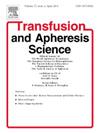评估输血医学体外诊断医疗器械总分析误差的非参数框架。
IF 1.4
4区 医学
Q4 HEMATOLOGY
引用次数: 0
摘要
定量测量的性能评估主要基于总分析误差(TAE)的评估。该评估包含几个关键目标,对确保测试结果准确、可靠和临床相关性至关重要。在体外诊断医疗设备(IVD-MDs)的性能评估中,传统的参数方法往往因数据正态性假设而达不到要求。本研究提出了一种估计和评估输血医学 TAE 的非参数方法,旨在提高 IVD-MD 的可靠性和患者安全性。通过采用稳健的统计定义和比较测量程序,提出了针对不同数据分布估算 TAE 的方案。来自 200 个样本的结果表明,非参数方法能更准确地反映 TAE。研究结果表明,非参数 TAE 估算对于确保输血医学临床检验的 "适用性 "至关重要,直接影响输血后的结果和患者护理。研究得出结论,在输血服务中采用非参数方法可显著提高检验准确性,并与最高实验室实践标准保持一致。本文章由计算机程序翻译,如有差异,请以英文原文为准。
A non-parametric framework for evaluating total analytical error in in vitro diagnostic medical devices in transfusion medicine
The performance assessment of quantitative measurements is predominantly based on evaluating Total Analytical Error (TAE). This evaluation encompasses several key objectives critical to ensuring accurate, reliable, and clinically relevant test results. Traditional parametric methods often fall short due to data normality assumptions in the performance assessment of in vitro diagnostic medical devices (IVD-MDs). This study presents a non-parametric approach to estimating and evaluating the TAE in transfusion medicine, aiming to enhance the reliability and patient safety of IVD-MDs. A protocol to estimate TAE over diverse data distributions is suggested, employing a robust statistical definition and comparative measurement procedures. Results from 200 samples indicate that non-parametric methods provided a more accurate reflection of TAE. The findings assert that non-parametric TAE estimation is vital for ensuring the 'fitness for purpose' of clinical tests in transfusion medicine, directly impacting post-transfusion outcomes and patient care. The study concludes that adopting non-parametric methods in transfusion services can significantly improve test accuracy, aligning with the highest laboratory practice standards.
求助全文
通过发布文献求助,成功后即可免费获取论文全文。
去求助
来源期刊
CiteScore
3.60
自引率
5.30%
发文量
181
审稿时长
42 days
期刊介绍:
Transfusion and Apheresis Science brings comprehensive and up-to-date information to physicians and health care professionals involved in the rapidly changing fields of transfusion medicine, hemostasis and apheresis. The journal presents original articles relating to scientific and clinical studies in the areas of immunohematology, transfusion practice, bleeding and thrombotic disorders and both therapeutic and donor apheresis including hematopoietic stem cells. Topics covered include the collection and processing of blood, compatibility testing and guidelines for the use of blood products, as well as screening for and transmission of blood-borne diseases. All areas of apheresis - therapeutic and collection - are also addressed. We would like to specifically encourage allied health professionals in this area to submit manuscripts that relate to improved patient and donor care, technical aspects and educational issues.
Transfusion and Apheresis Science features a "Theme" section which includes, in each issue, a group of papers designed to review a specific topic of current importance in transfusion and hemostasis for the discussion of topical issues specific to apheresis and focuses on the operators'' viewpoint. Another section is "What''s Happening" which provides informal reporting of activities in the field. In addition, brief case reports and Letters to the Editor, as well as reviews of meetings and events of general interest, and a listing of recent patents make the journal a complete source of information for practitioners of transfusion, hemostasis and apheresis science. Immediate dissemination of important information is ensured by the commitment of Transfusion and Apheresis Science to rapid publication of both symposia and submitted papers.

 求助内容:
求助内容: 应助结果提醒方式:
应助结果提醒方式:


